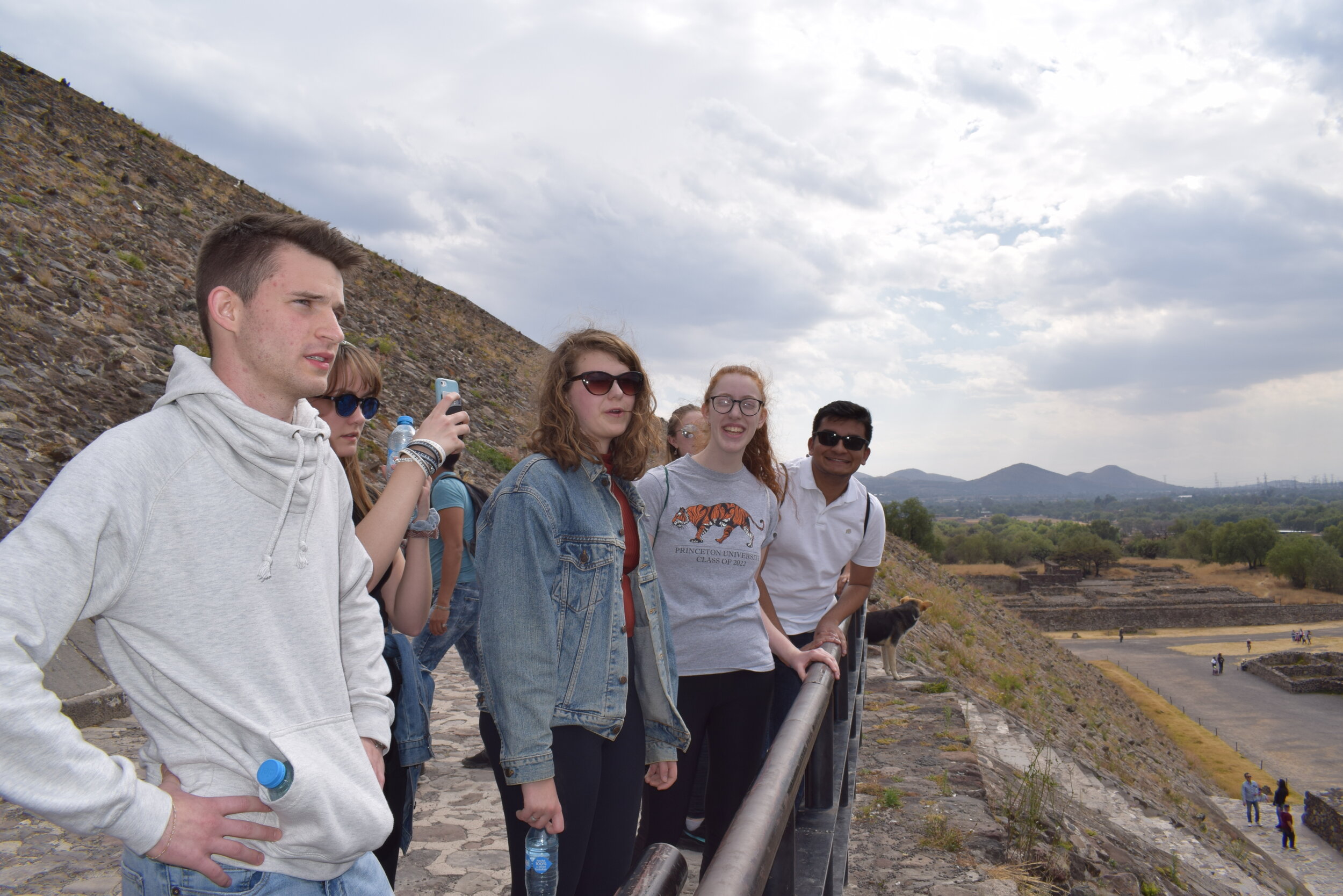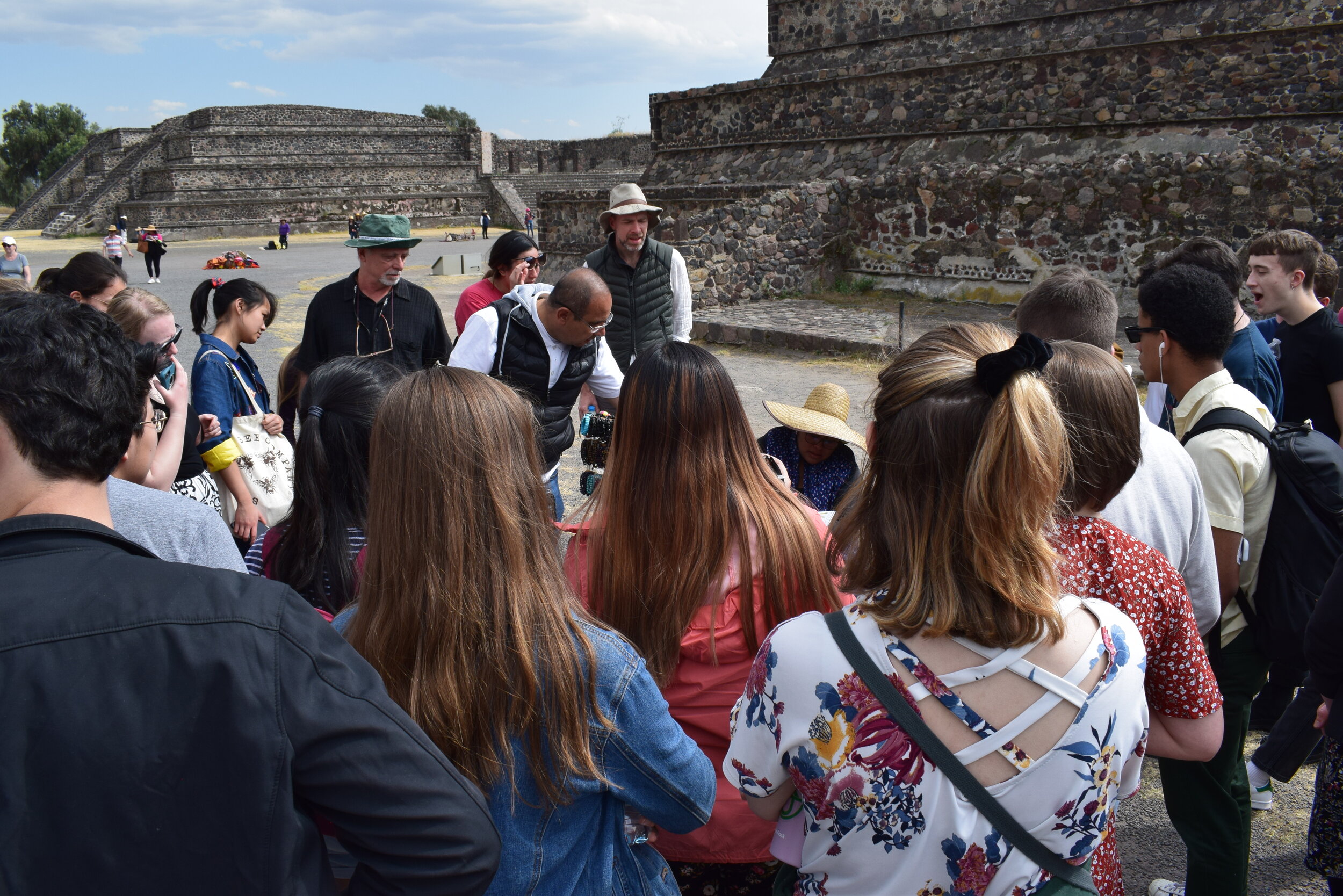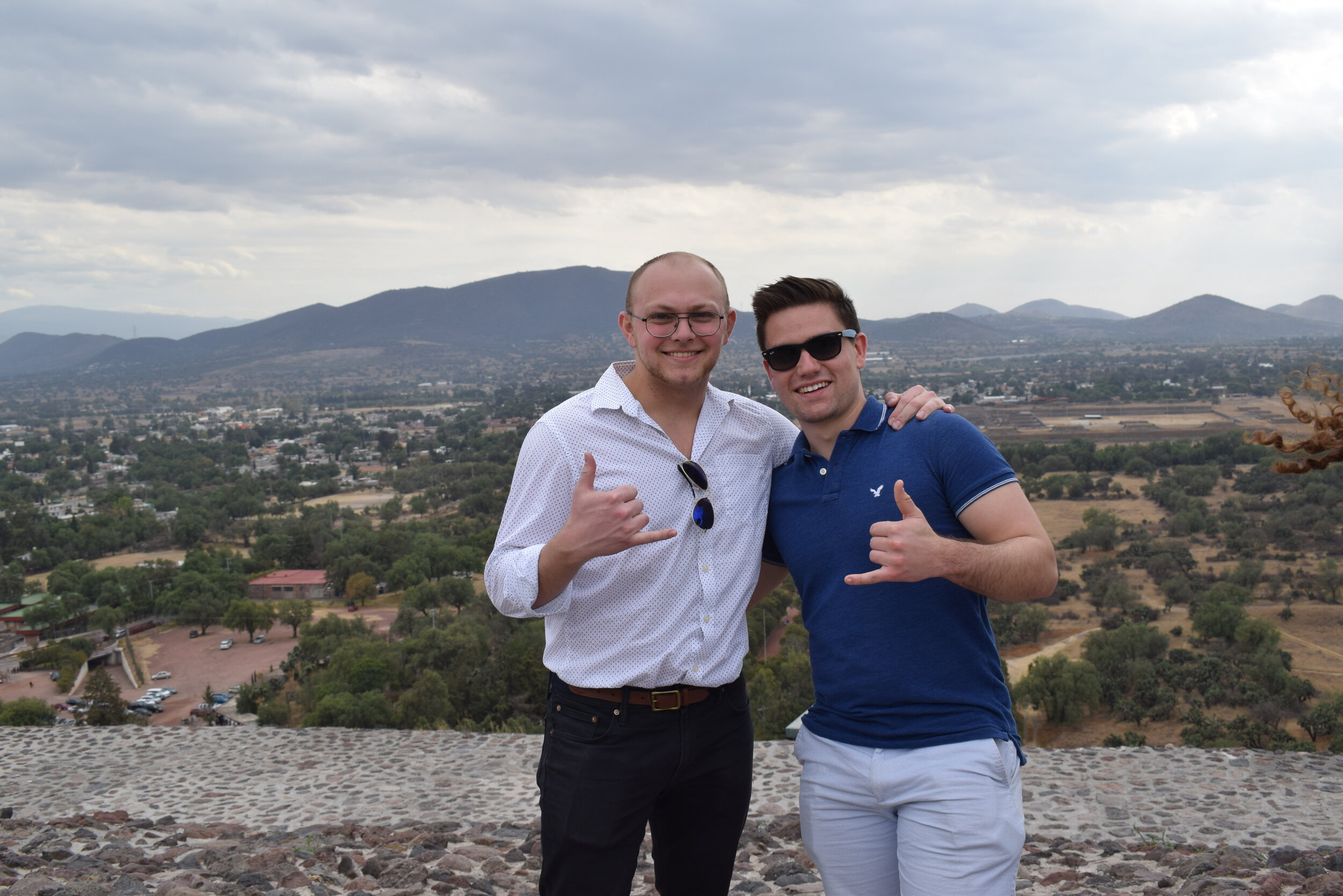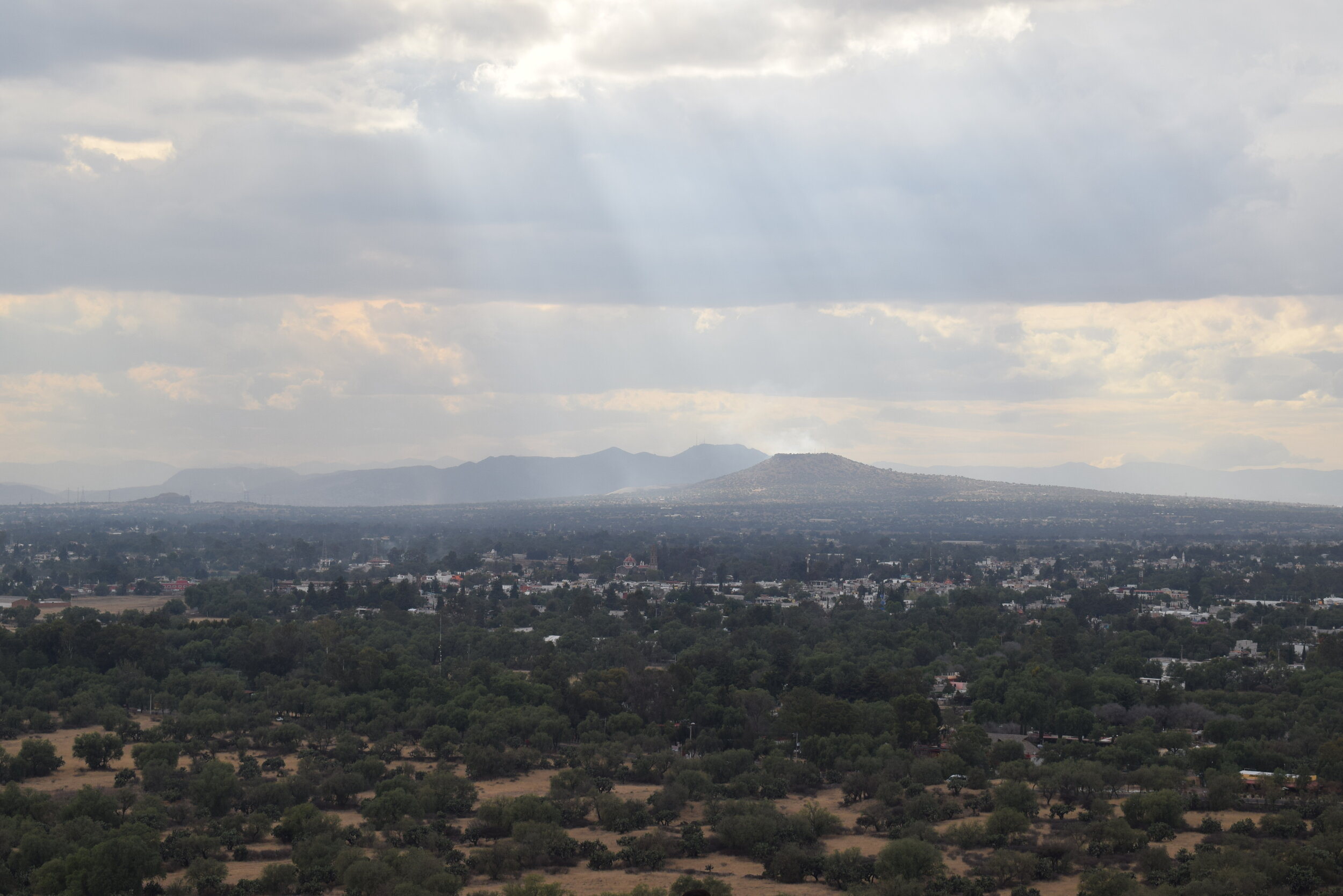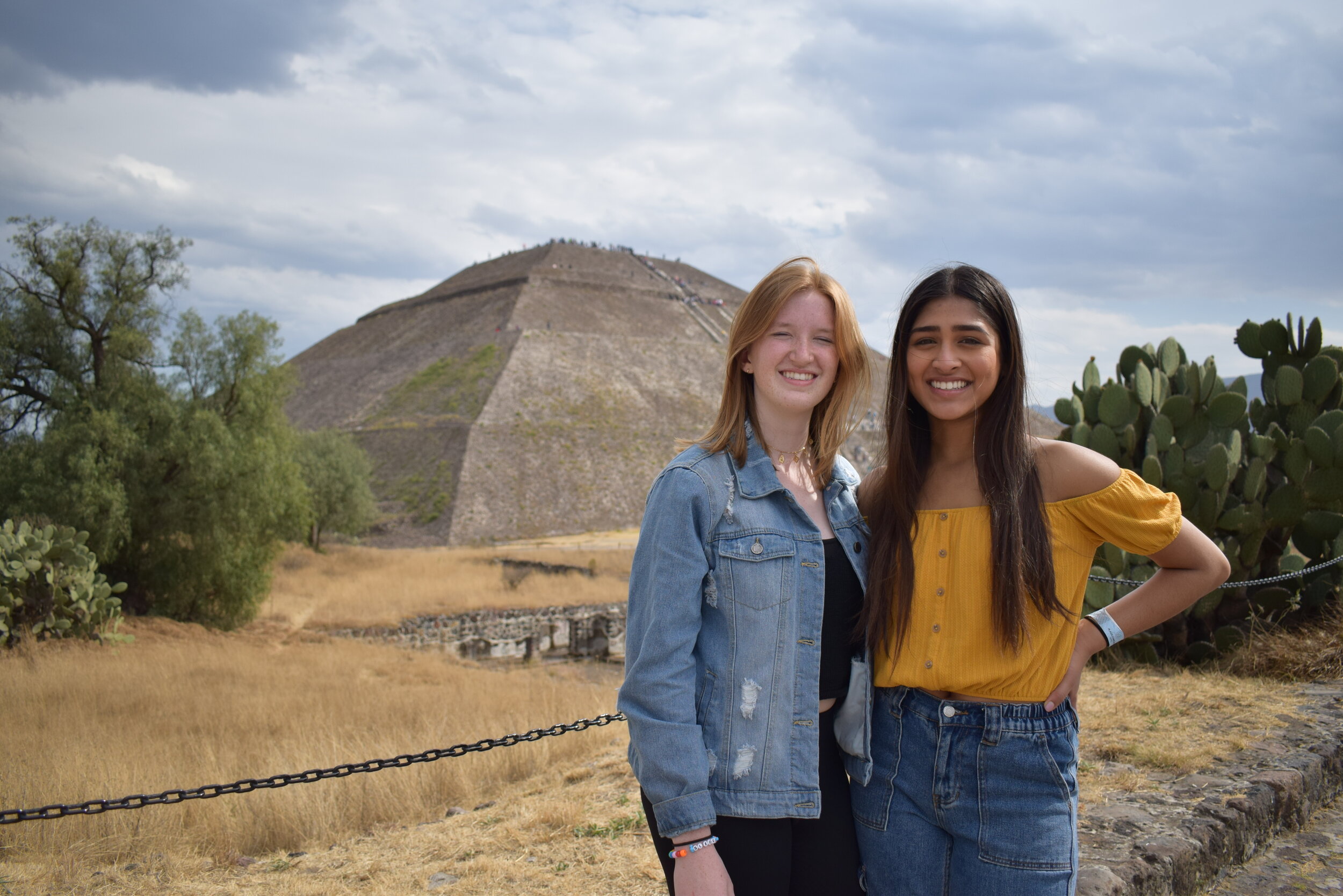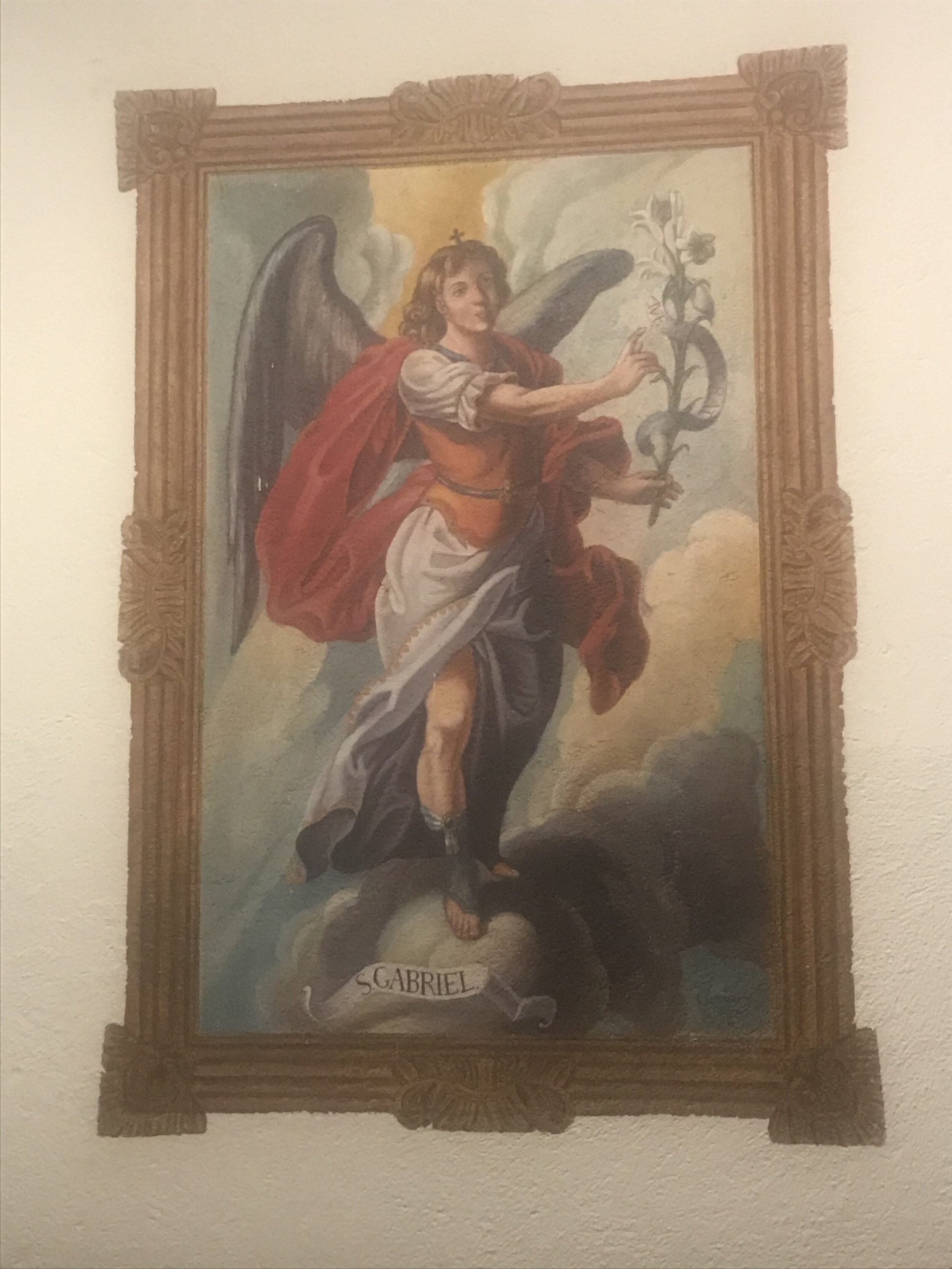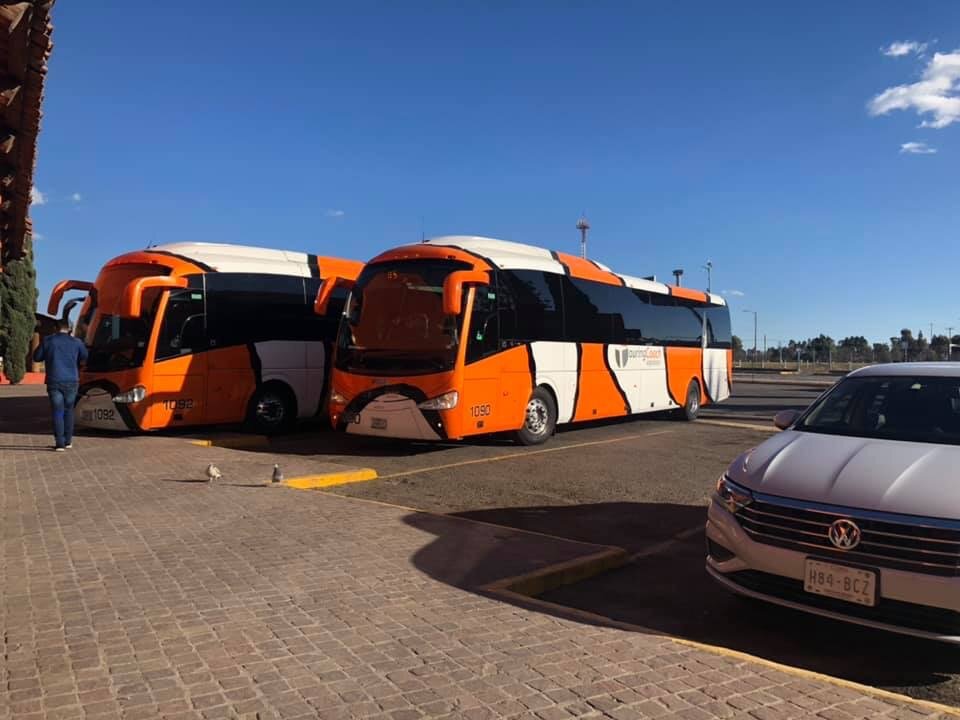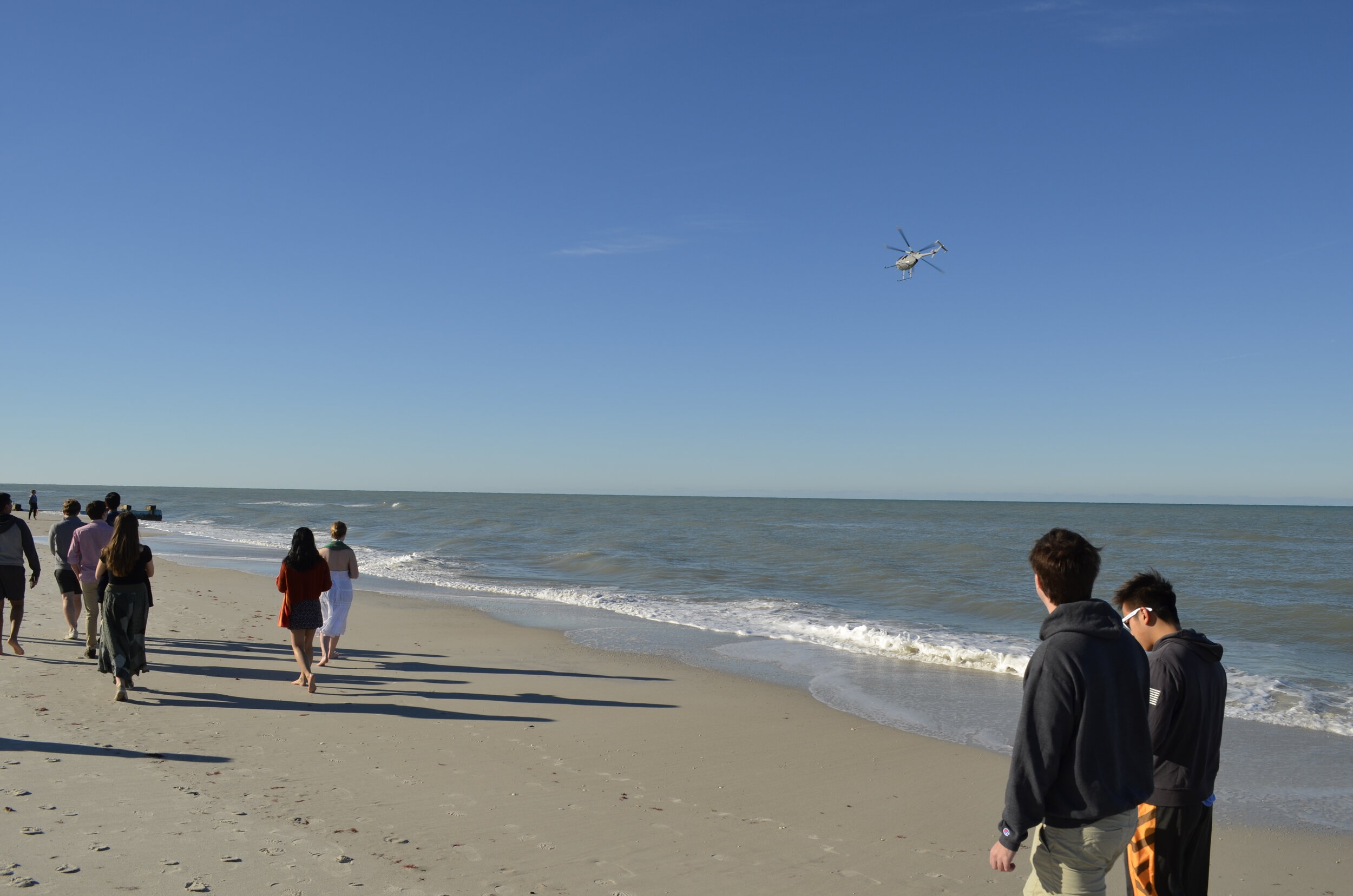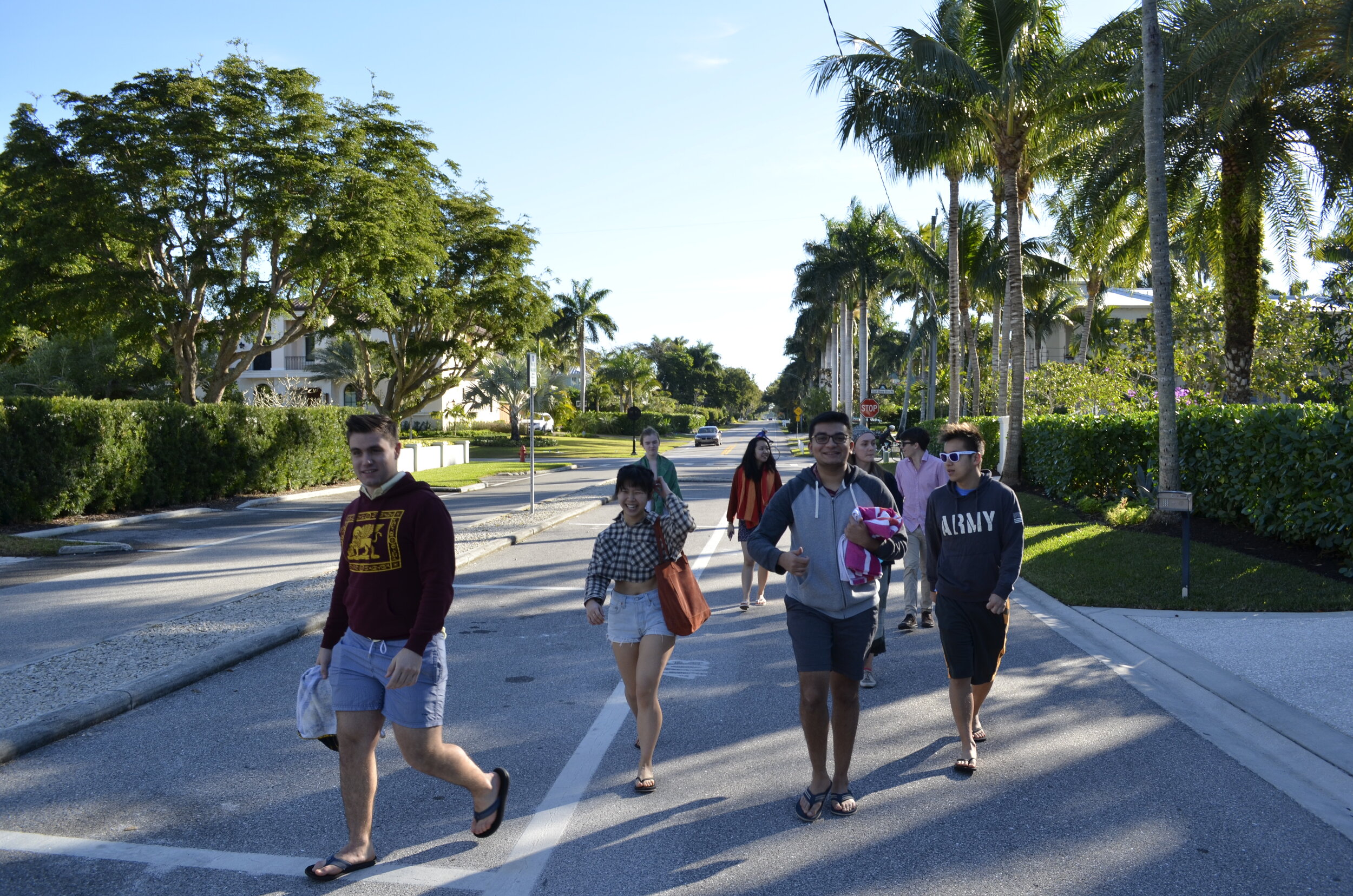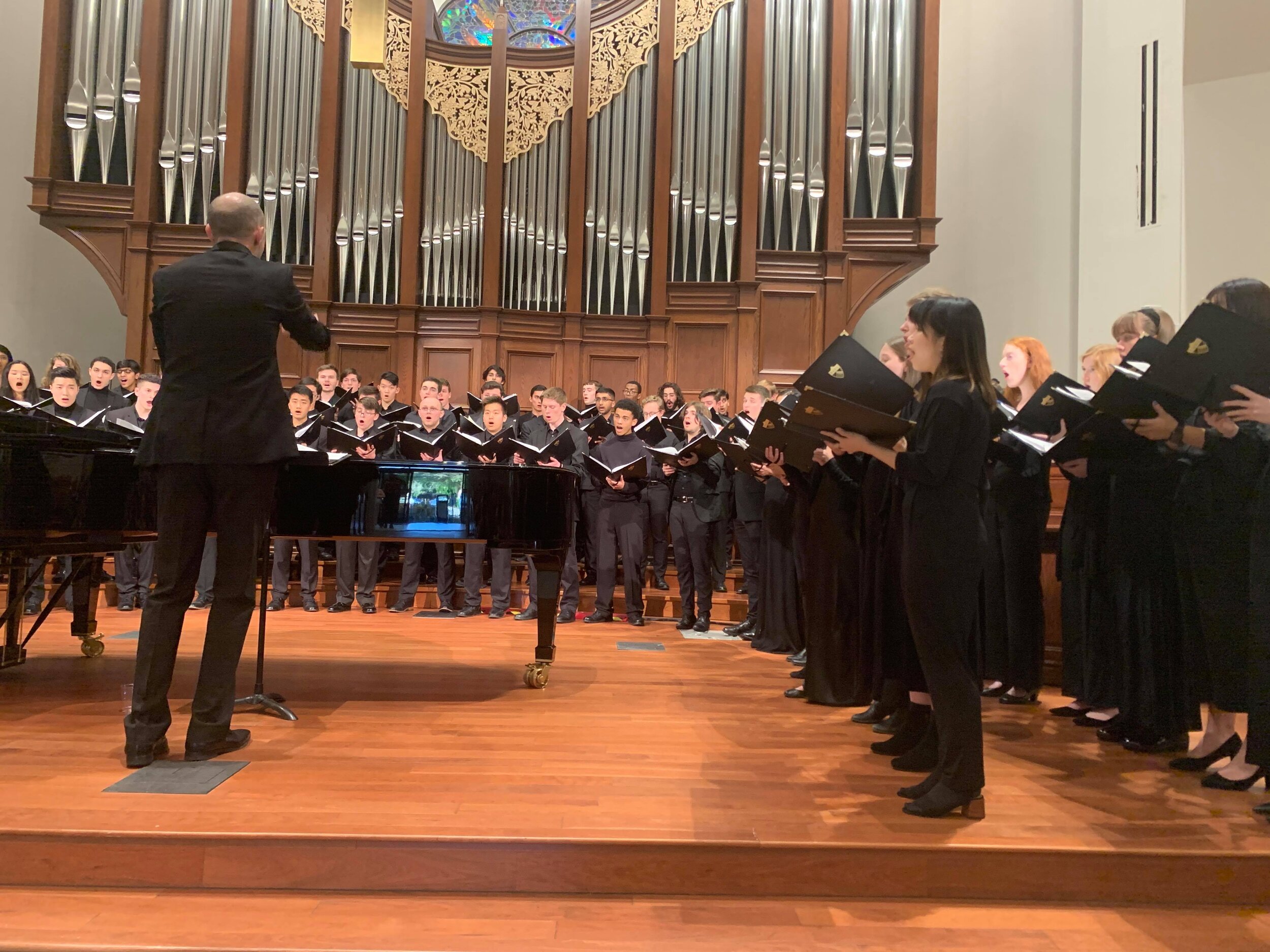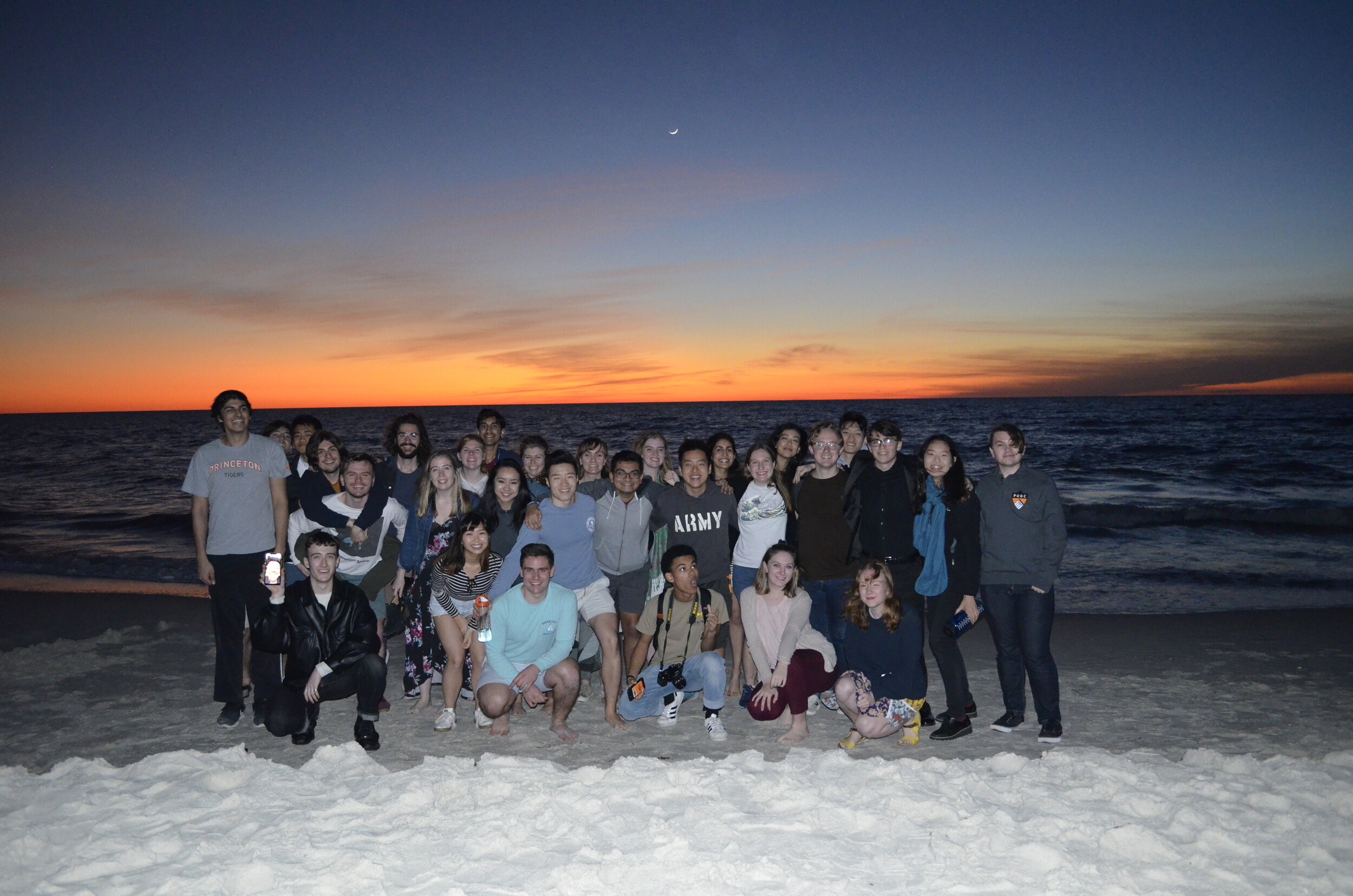The day began with the gaggle of ninety Glee Clubbers, a little tired after a week of travel, visiting the Old City of Mexico City. We passed by the Victory Column carrying the golden Angel of Independence as the busses drove down Reforma Avenue towards the old quarter. We spent the morning on a guided tour exploring the cobblestone streets of this charming part of “town”— if one could call a city of 26 million a “town”. Side by side stood Neoclassical churches, cafes with Moorish tessellations decorating their facades, Art Deco hotels. I am always struck by the architectural synthesis one finds in Mexico. Many of these buildings have a small porcelain plate beneath their current street name. These porcelain plates all read something to this extent:” Calle de —, 18xx-1928”. They denote the original name of the street before the great flood of 1928 that had the city under nearly 1.5m of water.
We also explored the Cathedral of Mexico City and Templo de Mayor. The cathedral was built upon the Aztec temple. In the square by the cathedral, there is a large gathering of Aztec shamanic healers and dancers. The juxtaposition and tension between the “new religion” and “old gods” still exist at the very heart of the capital.
That evening, we sang our last concert of the tour. It was a concert to end all concerts. We had over a thousand people show up for this final performance. They were a warm and responsive crowd who clapped with great appreciation and enthusiasm. I thought that I had performed for engaged audiences in the US but this was a whole new level. Perhaps the most memorable instance of this amazing audience was their palpable excitement and uncontainable joy after Mariana finished conducting Besame Mucho. Many of her relatives and family friends were present to watch her sing and conduct. I could see how special this final performance of Besame Mucho was for her as she took her place centre stage facing all of us. With her usual elegant gestures, her attentive direction to the choir, and her overflowing passion, Mariana led us through the now-familiar rhythmic landscape and lyrical journey of this bolero. We responded to her directions with ease—it was the established rapport between a conductor and her choir. After our final chord, a jazzy sforzando, the audience exploded with applause. Members of Mariana’s family called out in support. From onstage, it felt as if I was hit with a sea of claps, cheers, and joy.
Our evening ended with the farewell banquet at the Hacienda de los Morales. We toasted to the hardwork of our concert manager Mariana, tour manager Colton, and Gabriel. Much deserved revelry and camaraderie made for an incredible conclusion to our tour. Of course, we didn’t leave the banquet without singing Old Nassau.
Joanna Zhang ‘21

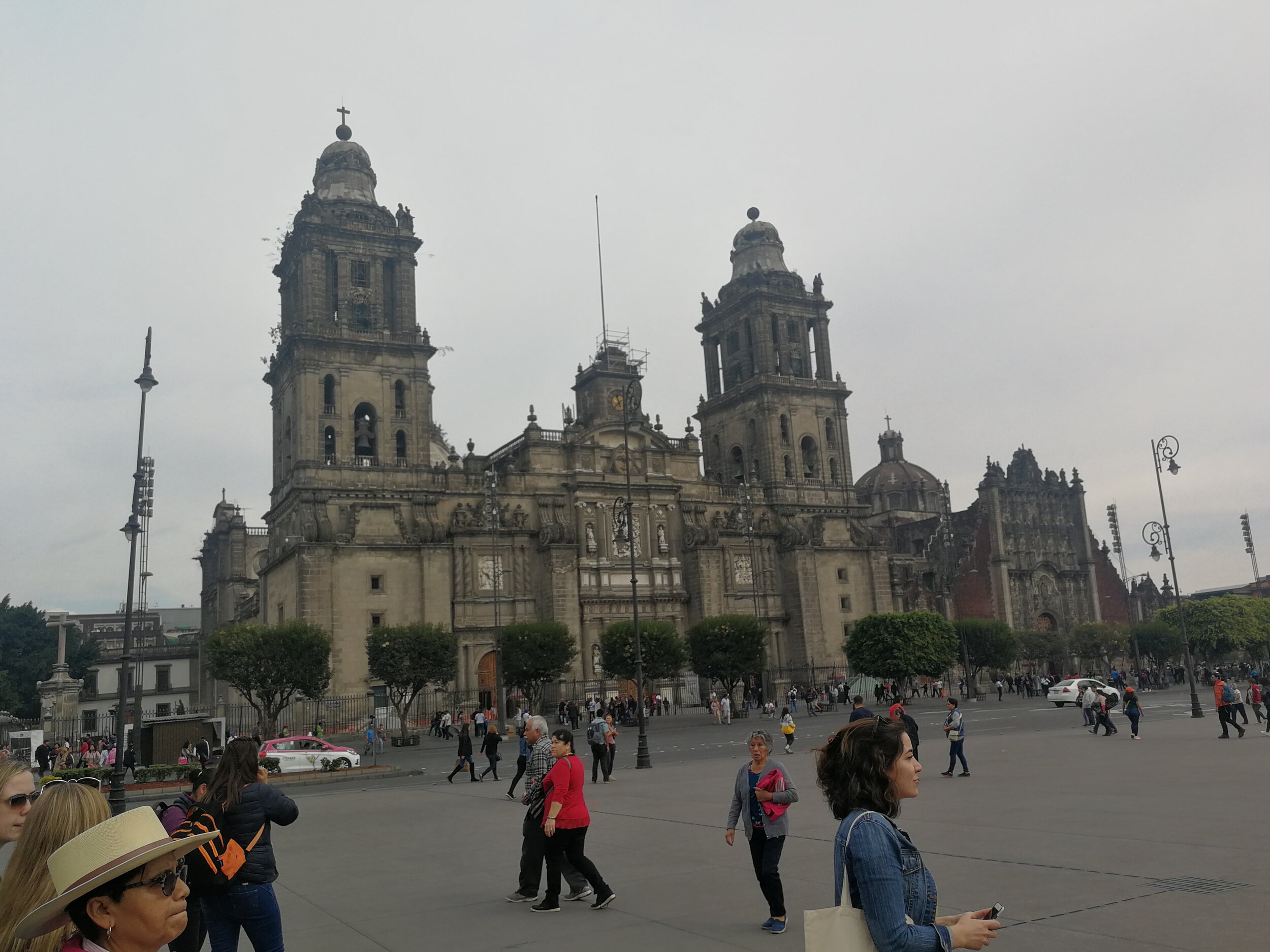
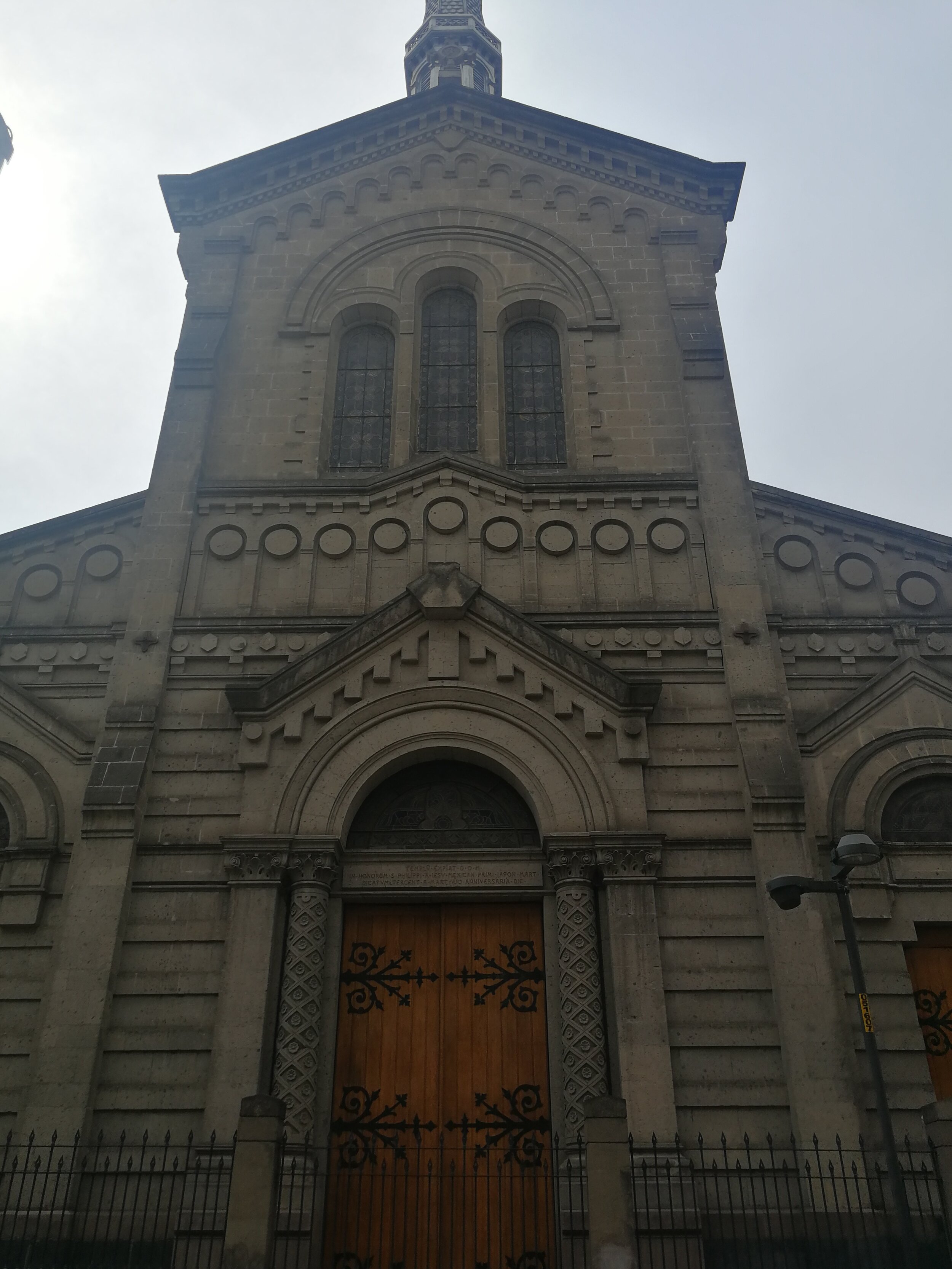
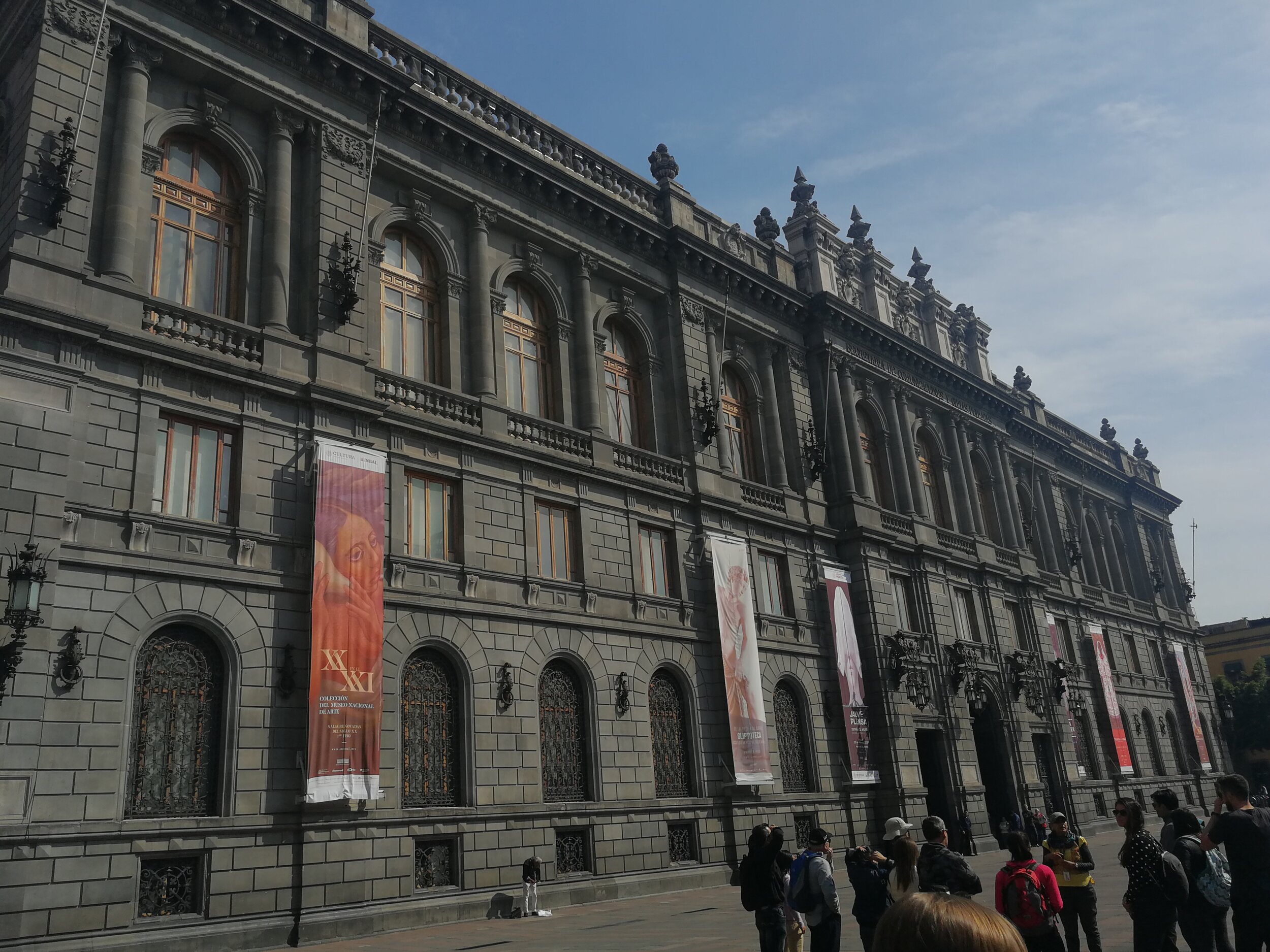

Photos courtesy of Jacqueline Pothier ‘22 and Joanna Zhang ‘21



